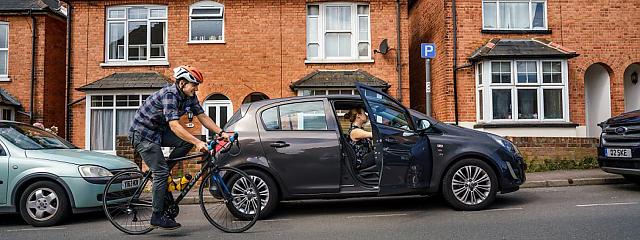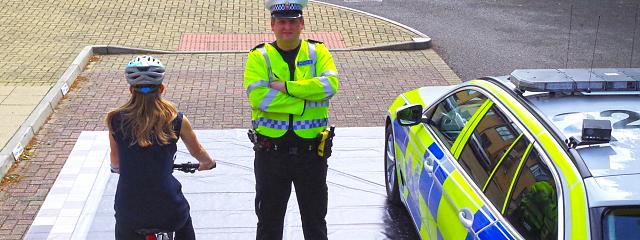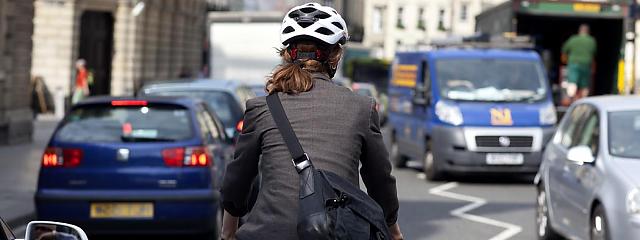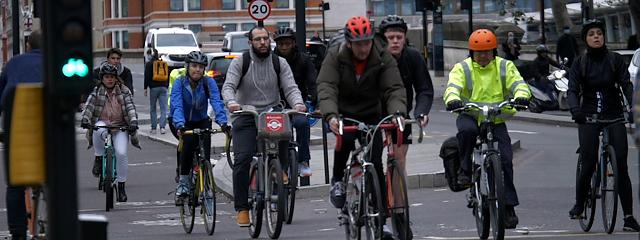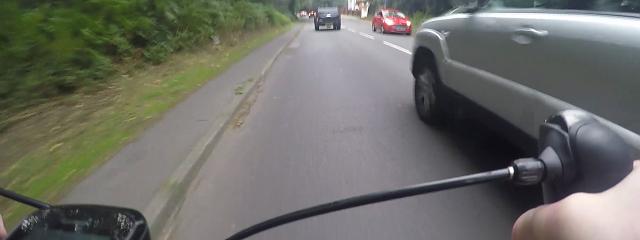
Most drivers still don’t know Highway Code changes one year on
Most drivers still don’t know Highway Code changes one year on
- YouGov poll shows no discernible improvement in awareness of Highway Code changes on correct distance for overtaking cyclists when driving
- Cycling UK calls for government to commit funding for long term awareness campaign
- Government figures show cost per road casualty fatality £2.1m in 2021, with 111 cyclists killed in the same year
- Includes additional quotes from AA President Edmund King, and patron of the All Party Parliamentary Walking and Cycling Group Ben Bradshaw MP
One year on from a new Highway Code designed to improve the safety of people walking, cycling and horse riding, there has been little improvement in people’s awareness of how it affects their driving, says Cycling UK.
As more people cycle in the UK due to the impact of the cost of living crisis, the charity is calling on the government to commit investment in a long-term awareness campaign about the changes which if understood and adopted will make the roads safer for everyone.
In a YouGov poll carried out in January on behalf of Cycling UK, a quarter (25%) of British adults asked were not aware of the changes to the Highway Code. Of those who were aware of the changes, just 28% were able to correctly answer the question “how much space should a driver leave when overtaking people cycling at speeds of up to 30mph”.
Within this group, only 30% of people who drive at least once a week gave the correct answer of 1.5 metres. A similar survey conducted in 2022 immediately following the changes to the Highway Code recorded just 33% of people who drive at least once a week, and were aware of changes to the Highway Code, giving the right response. Cycling UK says this shows government’s failure in communicating the changes.
The Highway Code changed on 29 January 2022 after over 10 years of campaigning by Cycling UK. Improvements included clarity and guidance on overtaking of people cycling, the introduction of a new hierarchy of road user placing pedestrians at the top, and promotion of the “Dutch reach”, a way to open car doors which limits the risk to passing traffic, especially cyclists.
Cycling UK argues that the lack of a public awareness campaign about the changes to the Highway Code in the build up to its introduction on 29 January last year as a cause for public confusion. This led to initially inaccurate and erroneous reporting about the changes in some media outlets.
Upon the introduction of the changes, THINK - the government body responsible for promoting road safety, ran a short-lived awareness campaign which was well received by road safety groups. Cycling UK believes this was a good first step, but argues these figures show how much more needs to be done to change entrenched driving behaviour, and the necessity for a sustained, well-funded awareness campaign of at least three years.
Sarah Mitchell, Cycling UK’s chief executive said:
“A year on since the Highway Code update, the lack of understanding and knowledge of the changes is alarming. If widely adopted, these changes can save lives and make the roads better for everyone – but if you’ve not passed your [driving] test in the last year, it’s unclear how you would know about them.
“We need government commitment and investment in a long-term awareness campaign of at least three years to help change long established driving behaviours. With more people looking for other ways to travel, whether for financial reasons, health or environmental, making our roads safer for its most vulnerable users is essential.”
Government figures show the value of prevention per reported fatal road casualty was £2.1 million in 2021. That year there were a total of 1,558 fatalities on Great Britain’s roads, of which 361 pedestrians 111 cyclists died. The value of preventing these deaths would have been £3.3 billion, or £1 billion for vulnerable road users. The government invested £500k in their THINK campaign to promote the new Highway Code in its first phase, and has reportedly spent £1.3 million over all on the campaign.
Sarah Mitchell said:
“Taking aside the human cost to families and friends who have unnecessarily lost someone on our roads, in a purely financial sense, investing in preventing deaths and serious injury makes sense. Saving human lives is not something we should be scrimping and saving on.”
Edmund King, AA president, said:
“It is vital both for cyclists and drivers that the well-intentioned changes highlighted in the new Highway Code one year ago are understood and respected by all road users. AA driving schools are doing this with new drivers but unfortunately this recent research seems to indicate that this is not the case amongst the general public, so more action is needed to promote these potentially life-saving changes.
“When the changes are spelt out to drivers, our surveys suggest that 89% support the reasons for giving 1.5m space when overtaking.”
Ben Bradshaw, MP for Exeter and patron of the All Party Parliamentary Cycling and Walking Group said:
“It is not realistic for government to expect decades of entrenched driving behaviour to change overnight. It took years for attitudes and habits to change over seatbelts, but they did in part thanks to a long term public awareness campaign. We need a similar campaign to communicate the changes to the Highway Code if we’re to make our roads safer and get more people cycling and walking.”
Kate Ball, 41, Derby cycles regularly with her family but often avoids certain routes or ends up driving due to previous close passes and the risk of collisions.
Kate said:
"Close passes are collisions that nearly happened. In most workplaces that's called a near miss. Near misses show us where there's a risk of injuries and deaths happening. We already make HGV drivers re-qualify every five years because of this kind of risk assessment. The Highway Code changes are great, but not enough people know about them.”
For more information, please contact the national Cycling UK press office www.cyclinguk.org/contact/press-and-media. If you would like to speak to a member of the press office during working hours (0900 - 1700) please email publicity@cyclinguk.org. Out of hours, call 07584 271 300
- Cycling UK, the UK’s cycling charity, imagines a world where the streets are free of congestion and the air is clean to breathe, where parents encourage their children to cycle to school and everyone shares the exhilaration of being in the saddle. For more than 140 years, we’ve been making our streets safer, opening up new traffic free routes and inspiring more people to cycle more often. www.cyclinguk.org
- Government figures on the value of prevention per reported collisions are available in RAS4001: Cost of prevention of road collisions and accidents
- Government figures on road casualties are available in the Department for Transport’s RAS0201:Reported road casualty numbers and rates by severity and road user type, Great Britain, ten years up to 2021 https://www.gov.uk/government/statistical-data-sets/reported-road-accidents-vehicles-and-casualties-tables-for-great-britain
- All figures, unless otherwise stated, are from YouGov Plc. Total sample size was 2168 adults. Fieldwork was undertaken between 13 – 15 January. The survey was carried out online. The figures have been weighted and are representative of all UK adults (aged 16+).







